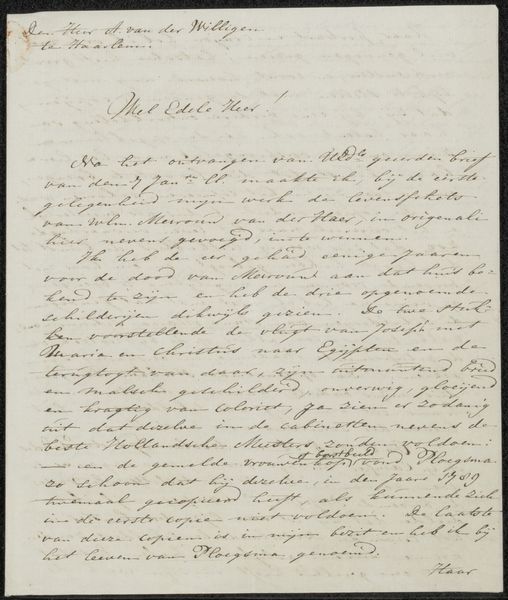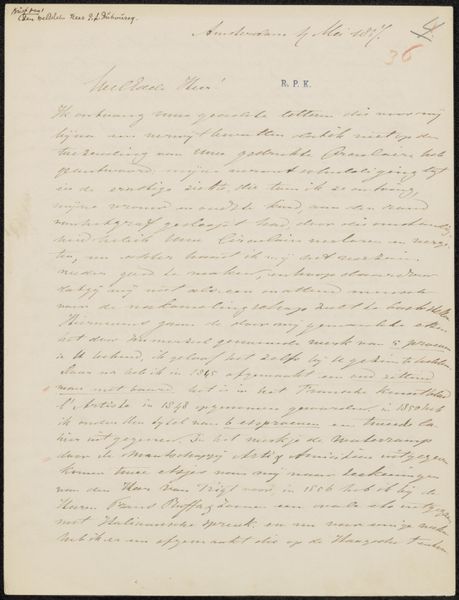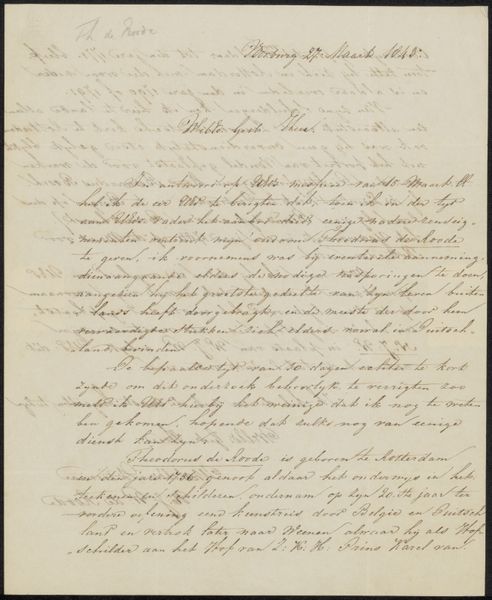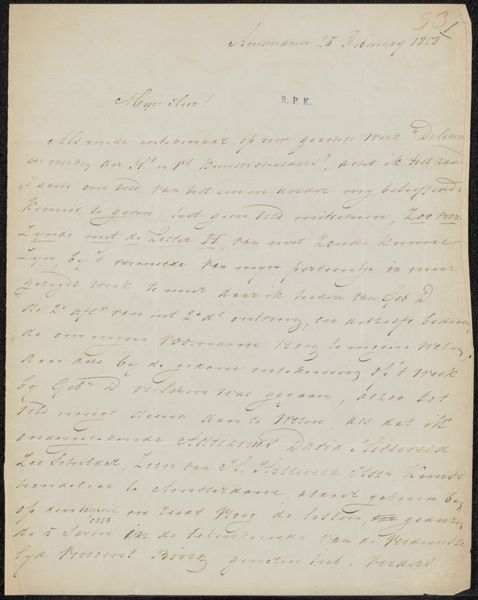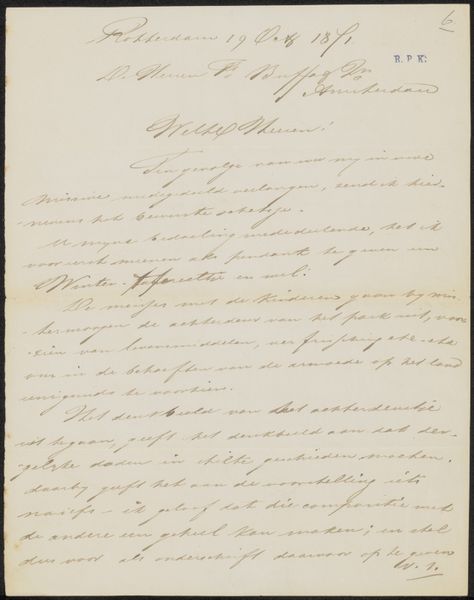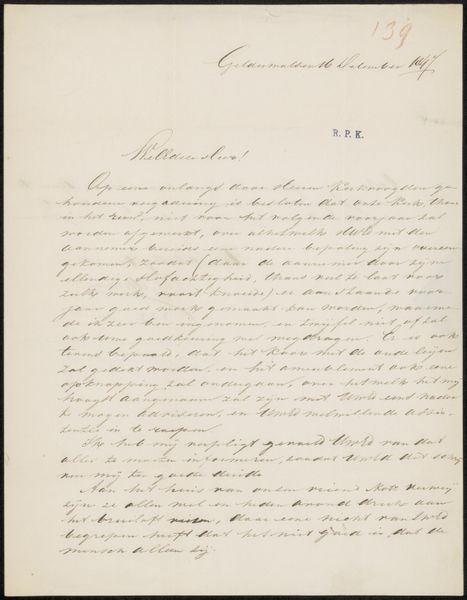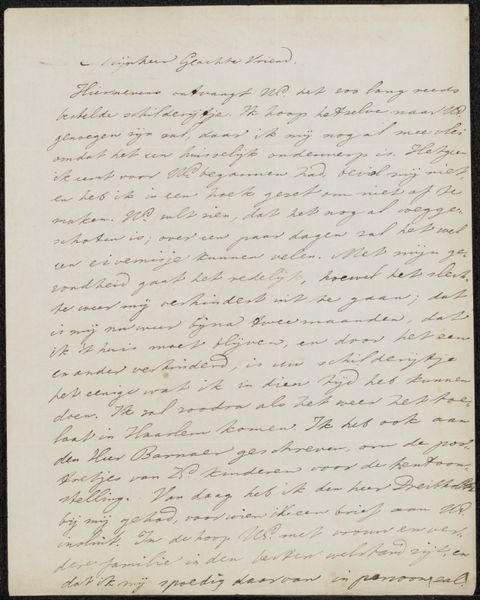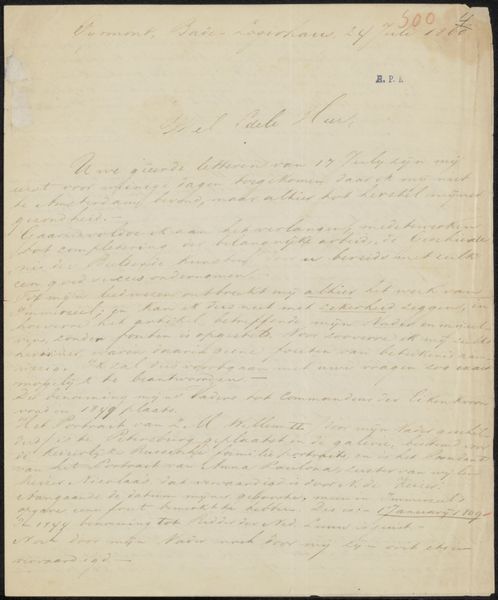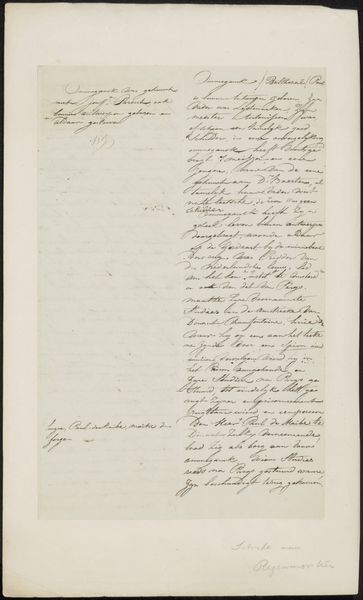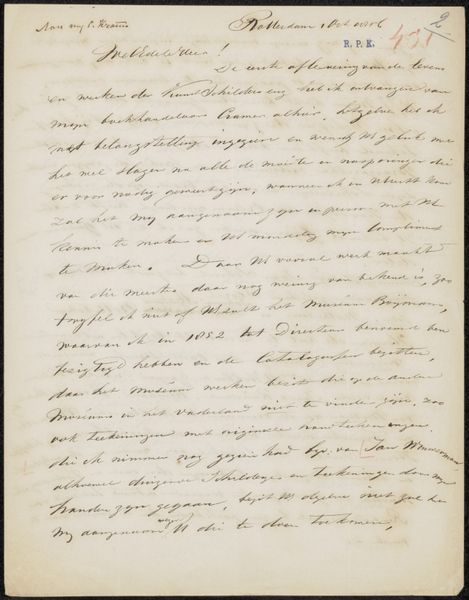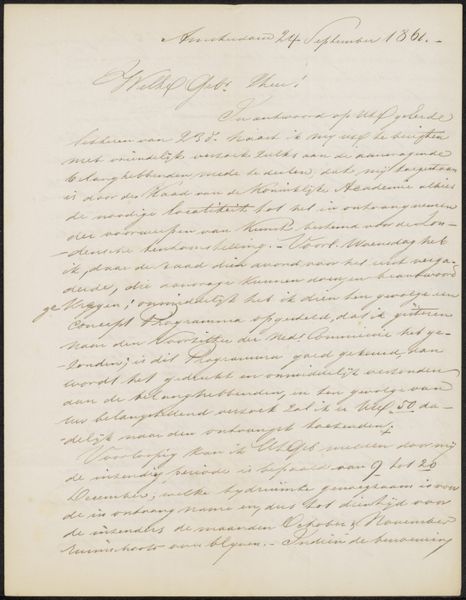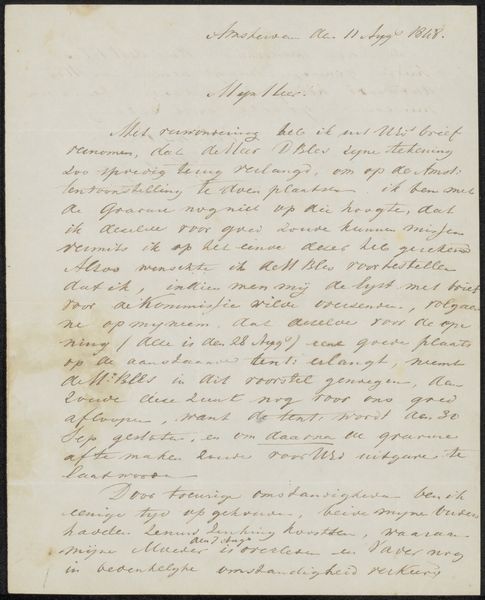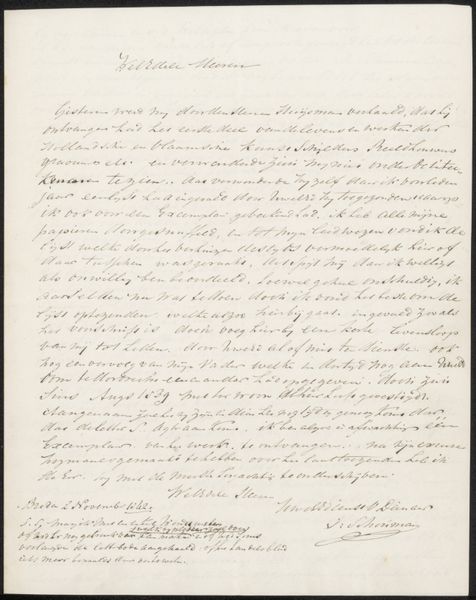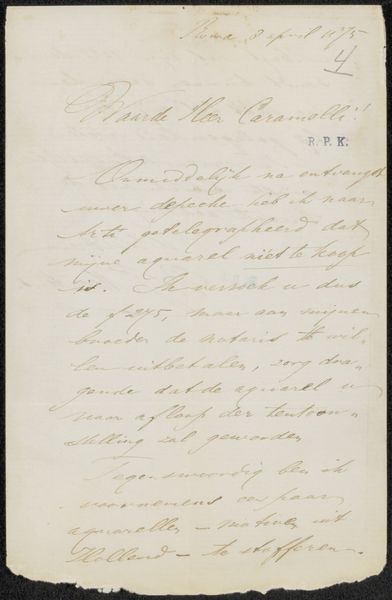
Brief aan Christiaan Kramm, Elie Saraber en J.A. Scholten Possibly 1851 - 1854
0:00
0:00
drawing, paper, pen, architecture
#
drawing
#
paper
#
pen
#
architecture
Copyright: Rijks Museum: Open Domain
Curator: The texture, even in a reproduction, just whispers secrets! It has such an intimate, almost fragile feel. Editor: Yes, well, what you're experiencing is perhaps the residue of history clinging to this drawing. This piece, created sometime between 1851 and 1854, is titled "Brief aan Christiaan Kramm, Elie Saraber en J.A. Scholten," penned by George Nicolaas Itz. The materials used are modest: pen and ink on paper. Curator: So, a letter. And given the style of script and paper quality, likely a fairly formal correspondence. You know, there's a deep sense of constraint visible here; you can almost sense the socio-political conventions dictating the careful script. Who were the recipients and what’s the context? Editor: Exactly. The recipients, Kramm, Saraber, and Scholten, were prominent figures. Understanding their relationships and the purpose of this communication illuminates not only Itz's life but also the broader network of influence at play. Curator: What about the contents of the letter itself? Do we know what Itz was communicating, and can that help understand society? Editor: Ah, context is paramount here. If memory serves, this correspondence relates to matters of public works; specifically, there is evidence that Itz here is seeking support in getting assistance with some building design commission that might lead to social improvements. That is why recipients all had backgrounds and careers linked to civil construction. Curator: How interesting; in his bid to find patronage he is laying himself and his project bare! It also feels particularly significant to consider his work through a lens of societal participation. Were these connections the ‘old boys club’ that barred access to those outside it? It speaks volumes about power and influence. Editor: Absolutely. This brief, penned note speaks volumes about the mechanics of 19th-century professional networks and who possessed social capital. It underscores the importance of analyzing not just the aesthetic qualities, but the social and political currents informing it. Curator: Precisely! Art history becomes truly vibrant when interwoven with gender, race, class – the complexities that shape its creation and impact. Editor: Indeed; history helps us trace those contours, revealing a far richer story.
Comments
No comments
Be the first to comment and join the conversation on the ultimate creative platform.
